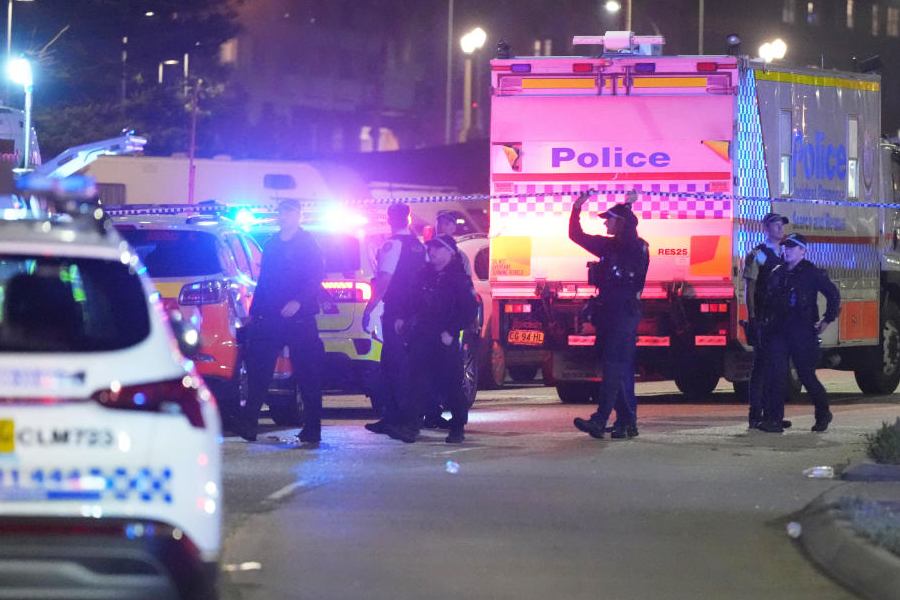Darbhanga district in Bihar is India’s most vulnerable to the health and economic impacts of the new coronavirus disease while South 24-Parganas is Bengal’s most vulnerable, an exercise to rank states and districts on vulnerability has suggested.
Researchers have created a vulnerability index that has identified Sikkim as the least vulnerable and Madhya Pradesh as the most vulnerable among 30 states assessed. Bengal is the sixth most vulnerable state, with Uttar Pradesh, Jharkhand, Telangana and Bihar ranked lower.
The researchers from the India office of the Population Council, an international non-government agency, are hoping that central and state authorities would use the vulnerability measures to “prepare for, mitigate and reduce” the health and socioeconomic impacts of Covid-19.
“We don’t want this to remain an academic exercise. Planners and policy makers could use the index to understand what needs to be addressed where and respond with measures tailored to the needs of specific districts,” said Rajib Acharya, a researcher with the Population Council.
Acharya and his colleague Akash Porwal have calculated vulnerability measures for states and districts by combining 15 indicators across five domains — socioeconomic, demographic, housing and hygiene, epidemiological, and health systems.
Their study was published in The Lancet, a medical journal, on Friday.
The study takes into account multiple factors that might influence the spread and the impact of the coronavirus — household income and education levels, urbanisation and population density, proportion of elderly people, average number of people residing per room for sleeping in a household, proportion of households with no hand hygiene facility, proportion of households with easy access to public health facilities, hospital beds per 1,000 population and chronic underlying disorders in the population, among others.

Eight of the top 10 least vulnerable districts are located in just three states — Sikkim, Arunachal Pradesh and Himachal Pradesh — while six of the 10 most vulnerable districts are in Bihar, with the other four in Uttar Pradesh, Madhya Pradesh and Jharkhand.
Sikkim is the least vulnerable state with a score of 0.0 followed by Arunachal Pradesh (0.29) and Himachal Pradesh (0.057) while Madhya Pradesh is the most vulnerable with 1.0, with Bihar (0.971) and Telangana (0.943) ranked just above.
Chhattisgarh, Kerala and Goa have the same vulnerability — 0.314 — for different reasons. Chhattisgarh scores poorly on multiple indicators, while Kerala and Goa score high on housing and hygiene but have poor scores on population density, urbanisation and people with underlying health disorders.
Bengal’s overall score is 0.829. While the state scores high on healthcare systems compared with many other states, its overall vulnerability increases because of poor scores on housing and hygiene and large proportions of populations with chronic underlying health disorders.
States or districts with large proportions of people with underlying health disorders such as diabetes, high blood pressure or cardiovascular diseases would be more vulnerable to severe Covid-19.
The index has also thrown up surprises. Maharashtra, for instance, has a poor score on healthcare infrastructure. Maharashtra has a poorer healthcare score, 0.886, than Bengal’s 0.314.
“We shouldn’t see Maharashtra only as Mumbai and Pune,” Acharya said.
Ghaziabad, located within the National Capital Territory, has a low healthcare score of 0.969, comparable to those of the most vulnerable districts in Bihar and Uttar Pradesh.
A senior health researcher has described the study as the first attempt to explore the vulnerability of the states and districts with “reasonable precision”.
“Most assessments of the epidemic have focused on the numbers of infected cases and case fatality rates — this vulnerability index could help planners prioritise responses at the district level,” said Sanjay Mohanty, a faculty member at the International Institute of Population Sciences, Mumbai, who was not associated with the study.
Many of the highly vulnerable districts are in the poorer states such as Bihar and Uttar Pradesh.
“Public investments in the health infrastructure, human resources and testing facilities in such districts could help save lives as the epidemic continues to expand,” Mohanty said.
Acharya and Porwal have underlined that the idea of a vulnerability index is not new. The US Centres for Disease Control uses a vulnerability index to measure the resilience of communities when faced with natural or other disasters, they said.
Their study did not seek to predict the risk of infection in any district or state, but it observed similarities between vulnerability and current concentration of Covid-19 cases at the state level up to mid-June.
Eight states accounted for 80 per cent of Covid-19 cases up to June 17. Five of these eight states (Gujarat, Maharashtra, Bengal, Uttar Pradesh and Madhya Pradesh) had a high overall vulnerability measure of 0.771 to 1.0.











